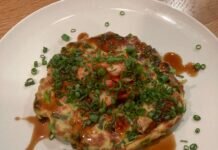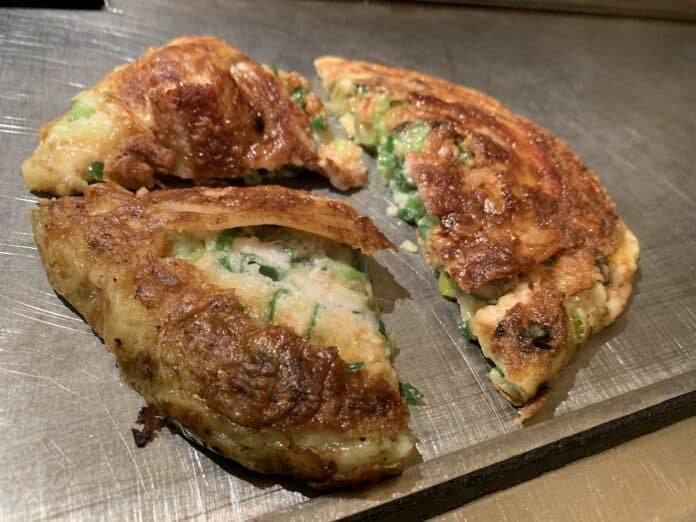
Okonomiyaki and Takoyaki will always be the best known local street foods in Osaka. However, there’s another popular food, often overlooked, but just as tasty… Negiyaki
What is Negiyaki?
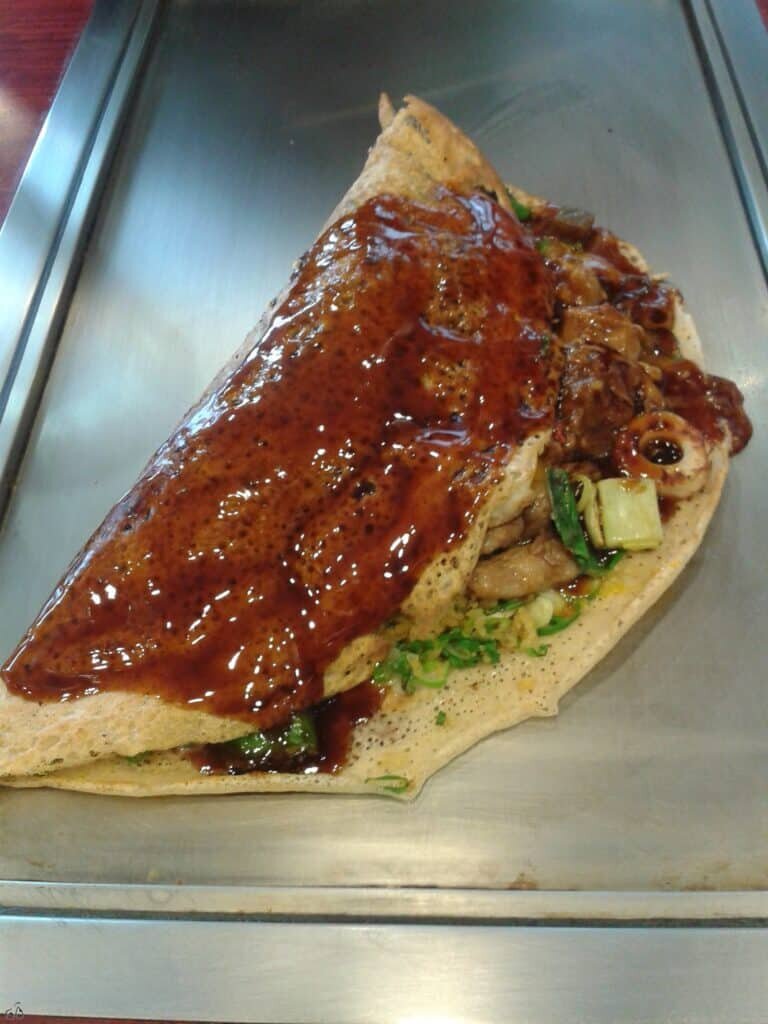
In initial appearance, Negiyaki may seem similar to Okonomiyaki. It too, has a pancake like base. The main difference however is what goes inside said pancake. As the name suggests (negi meaning spring onions) the pancake is layered over a lot of spring onions and a few other tasty treats too.
If you’ve ever been to a Korean restaurant, and sampled a “chijimi” pancake, then you’ll be familiar with what Negiyaki is all about. The thin, crispy pancake atop a rich spring onion accented filling, and capped off beautifully with just a hint of soy sauce is what really makes a Negiyaki what it is.
However, there’s so much more to this dish than just the spring onions. Many varietes of Negiyaki also employ beef, shrimp, seasonal vegetables and even the likes of tofu, and konjaku.
Varieties of Negiyaki
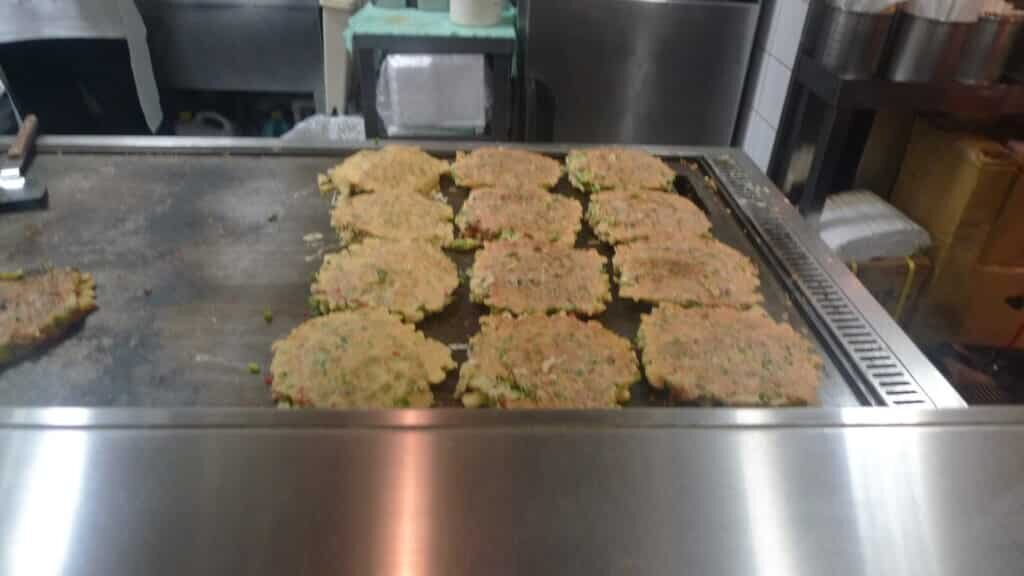
As I mentioned earlier, Negiyaki comes in many different styles and varieties. In some ways its similar to Spanish Paella, in the sense that there is no, absolute formula for how to make it. Each individual restaurant, or store, has their own take on the dish. For example, Negiyaki restaurants in Juso, which is on the road from Osaka to Kyoto, often use Kujo negi, a special type of spring onion grown only in neighbouring Kyoto prefecture.
However, even the most basic of Negiyaki establishments have a wide selection of different Negiyaki to choose from. Indeed, with this type of dish, the simplest is often the best. Among the types I enjoy are cheese Negiyaki, beef tendon Negiyaki, and, given that Osaka is a port city, the octupus and squid Negiyaki are also well worth a look.
Mochi is another popular one. It’s kind of hard to describe mochi. Its basically a soft, plyable, almost cheese like substance made from fermented rice. It has little flavour of its own, but when paired with strong flavours such as spring onions, beef and fish, it does a great job of bulking out and adding a little extra bite to your Negiyaki.
Where to buy Negiyaki
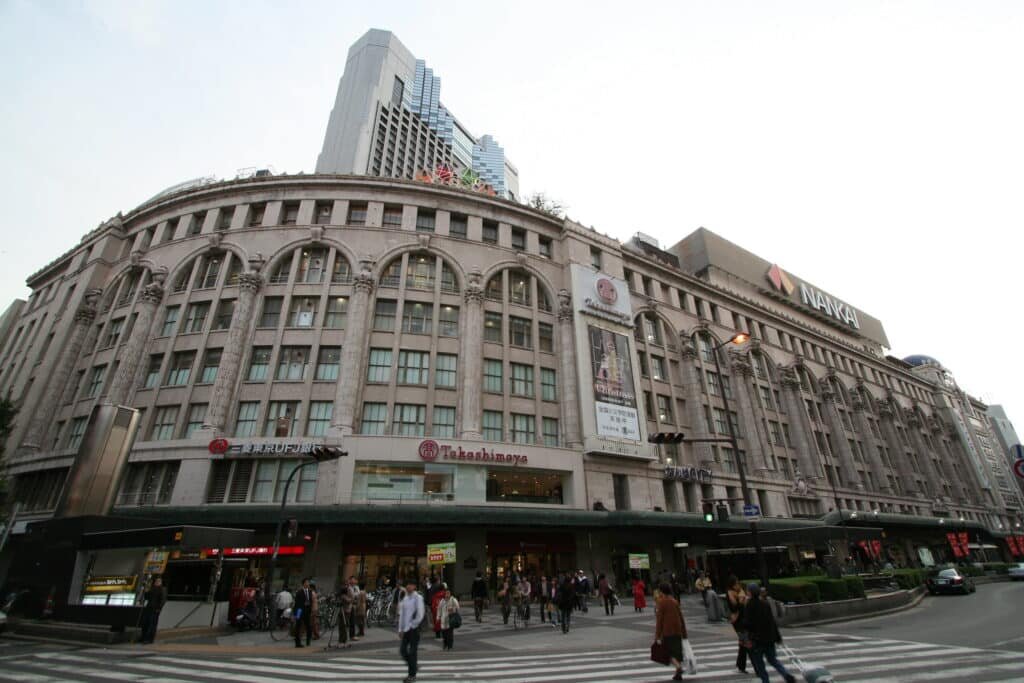
Much like its sister dish, okonomiyaki, Negiyaki can often be found in local supermarkets and convienience stores. However, there really is no substitute for a freshly grilled Negiyaki at a local izakaya or restaurant.
There are plenty dotted all around Osaka, but my personal favourite would probably be Fukutaro, which has branches in Umeda, next to JR Osaka Station, and the Takashimaya department store near Namba station.
Fukutaro not only provides delicious Negiyaki, but they are also very competitively priced, with basic Negiyaki starting from as little as 600 yen.
When you consider they are based right in the heart of two of Osaka’s busiest shopping districts, this represents excellent value for money.
If you do go to Fukutaro, I recommend the cheese Negiyaki. Its light, fluffy and really reminds me of one of my favourite European snack dishes, the classical Spanish Omelette.
How to make Negiyaki
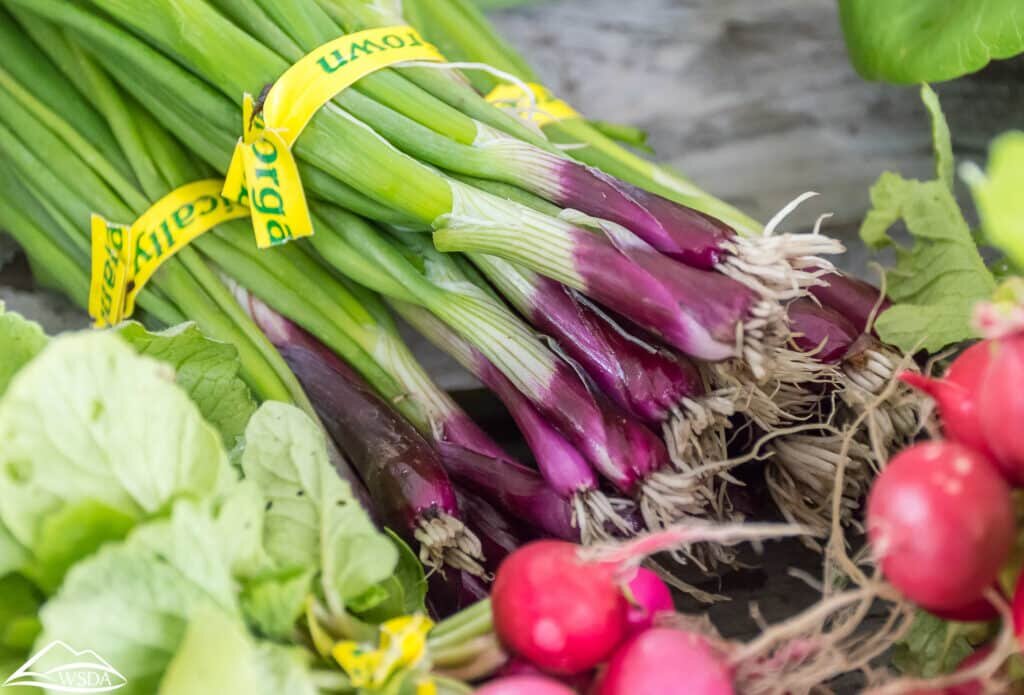
Now, if you have already read our article on how to make Okonomiyaki, then you will be in fairly familiar territory here. Well, actually, we will repeat several steps, since Negiyaki is, in essence, just an Okonomiyaki with a couple of the ingredients switched around.
Again though, it’s open to interpretation, so don’t feel obligated to follow my directions exactly. Part of the fun of cooking is being able to take your own ideas and run with them too.
Here’s my list of suggested ingredients:
2 Eggs
1 small cup of flour
1 tablespoon of soy sauce
water
Four finely chopped spring onions.
100 grams of finely chopped belly pork
50 grams of diced squid
50 grams of beansprouts
1 bowl of finely shredded cabbage
150 grams of grated cheddar cheese
Bonito Flakes
Directions:
Begin by breaking your two eggs into a bowl. Whisk them vigorously until the form a fine yellow paste.
Next, add the cabbage, beansprouts and belly pork. Again, whisk the mixture thoroughly until the entirety of the ingredients are coated. Add water to ensure that the mixture maintains a nice, milky consistency.
Once that’s done, add the yuzu extract and soy sauce, give the whole mixture another stir to ensure its all nicely kneaded into the mix.
Preheat your frying pan to a medium heat, and make sure it’s well oiled.
At this point, add about 20% of your finely chopped spring onions and set the rest aside for later.
Give everything another vigourous stir. And ensure all the spring onions are coated in the mixture.
Pour half of the mixture into the frying pan, spread it out in a circular motion around the pan, ensure the mix is at least one inch thick throughout.
Cook for around 30 seconds.
Turn your pancake over.
At this point, add your squid, a little more water and gently stir it into the pancake.
Add the rest of your spring onions, hold your pancake over onto itself, making a semi-circle.
Flip the pancake again, be careful not to let the mixture burn.
Once the pancake is heated through and solidified, it is ready to serve.
Garnish with your choice of cheese, bonito flakes or my personal favourites, katsu sauce and mayonaise.




















